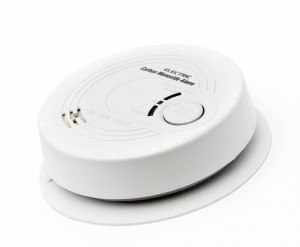 Carbon monoxide asphyxiation recently became the cause of one hospitalization and three deaths.
Carbon monoxide asphyxiation recently became the cause of one hospitalization and three deaths.
On April 16, Darryl Dean Jenkins, 73, and Shirley Mae Jenkins, 72, both of Longview, Wash., were in room 225 of the Best Western when both were found deceased within two feet of each other.
In a similar incident, on Saturday, June 9, 11-year-old Jeffrey Williams was found deceased while his mother, 49-year-old Jeannie Williams, of Rock Hill, S.C., was rushed to the Watauga Medical Center, where her condition remains stable now.
Autopsy reports in both of these incidents clearly indicate carbon monoxide asphyxiation as the cause of death. While the incidents are startling on their own, statistics from the United States Fire Administration (USFA) show that more than 150 people in America die from carbon monoxide poisoning every year. This is an extremely serious issue that still remains neglected by a major part of U.S. population.
Understanding the Carbon Monoxide Risk
Often called “The Silent Killer,” carbon monoxide (CO) is a colorless, odorless, and tasteless gas that is commonly produced as a byproduct of incomplete combustion occurring in furnaces, heating appliances, water heaters, generators, dryers, or cars left running in the garage. A higher concentration of CO can cause immediate death, while slow exposure can still slowly kill.
Carbon monoxide poisoning is a very potent danger in most households using the aforementioned appliances. It is hence highly recommended that you install carbon monoxide detectors in your homes to save yourself and your familyfrom such a hazard.
Carbon Monoxide Detectors and Alarms
It’s better safe than sorry when it comes to carbon monoxide asphyxiation. Do not assume that something like this could never happen to you, as most homes these days use at least one of such carbon monoxide producing appliances. Carbon monoxide detectors and alarm systems are now an easily available accessory under , and are fairly affordable, starting from as low as $25. Popular Brands such as Kidde, First Alert, and Universal Security Instruments, as well as many others offer very affordable and effective carbon monoxide detectors and alarm systems. You can even buy that has these systems combined.
These detectors automatically sense the presence of carbon monoxide in your indoor air in terms of particles per million, and sound an alarm if the level goes above a certain limit.
Apart from buying and installing these detectors, it’s very important that you understand how to use them correctly. Because the risk of carbon monoxide asphyxiation is the highest during sleeping times, keep these detectors as close to the sleeping area as possible. Also keep them at knee or chest height for maximum detection. If there are multiple sleeping areas in your house, have individual detectors for each sleeping area. Please understand that this could potentially save the lives of your loved ones.
As a note of caution, though, do not entirely give up on your own senses once you’ve installed CO detectors. If you feel any pungent or unusual smell when you turn on your furnace, please have it checked. Watch out for symptoms of CO poisoning, such as irritation in theeyes, nausea, dizziness, headache, and confusion. And if you feel the threat of CO concentration in your home, evacuate immediately. Leave the doors open and contact the fire station. The right mix of technology and your intuition could prevent incidents of carbon monoxide asphyxiation.

Steven Ordona
Author & Pubic Relations – Steven is a fifteen year executive veteran of the home security industry and is now in charge of the site’s content. Steven is responsible for all the content created and also plays a critical role in our public relations department.

